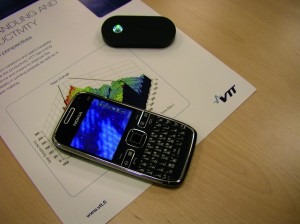
VTT Technical Research Centre of Finland has developed an optical accessory that turns an ordinary camera phone into a high-resolution microscope
The first models to be released in March will be accurate to one hundredth of a millimetre, said VTT.
Among those who will benefit from the device are the printing industry, consumers, the security business and health care professionals.
A new Finnish enterprise called KeepLoop Oy and VTT are already exploring the commercial potential of the invention.
The operation of the device is based on images produced by the combined effect of an LED light and an optical lens.
Various surfaces and structures can be examined in microscopic detail and the phone's camera used to take sharp, high-resolution images that can be forwarded as MMS messages.
An ordinary mobile phone turns into an instant microscope by attaching a thin, magnetic microscope module in front of the camera's normal lens.
The camera's field of view is 2 x 3 millimetres.
A number of LEDs have been sunk into the outer edge of the lens, allowing objects to be illuminated from different angles.
Images illuminated from several different angles could be used to produce 3D topographic maps, for example, with mobile phone software.
The 3D maps would be accurate to one hundredth of a millimetre.
The mobile phone microscope could also be used to study surface formations, especially in the printing industry as part of quality control and in field conditions.
In the security business the device could be used, for example, to read microcode in various logistics systems, while it is also suited for studying security markings, and for authenticating products as genuine as part of brand protection.
The device can also be applied to study of the environment.
Consumers could use the instant microscope when out and about to examine the leaves of trees and plants, for example, or study insects.
Another potential application is in examining textile structures such as strands of hair, or the fibrous structure of paper.




